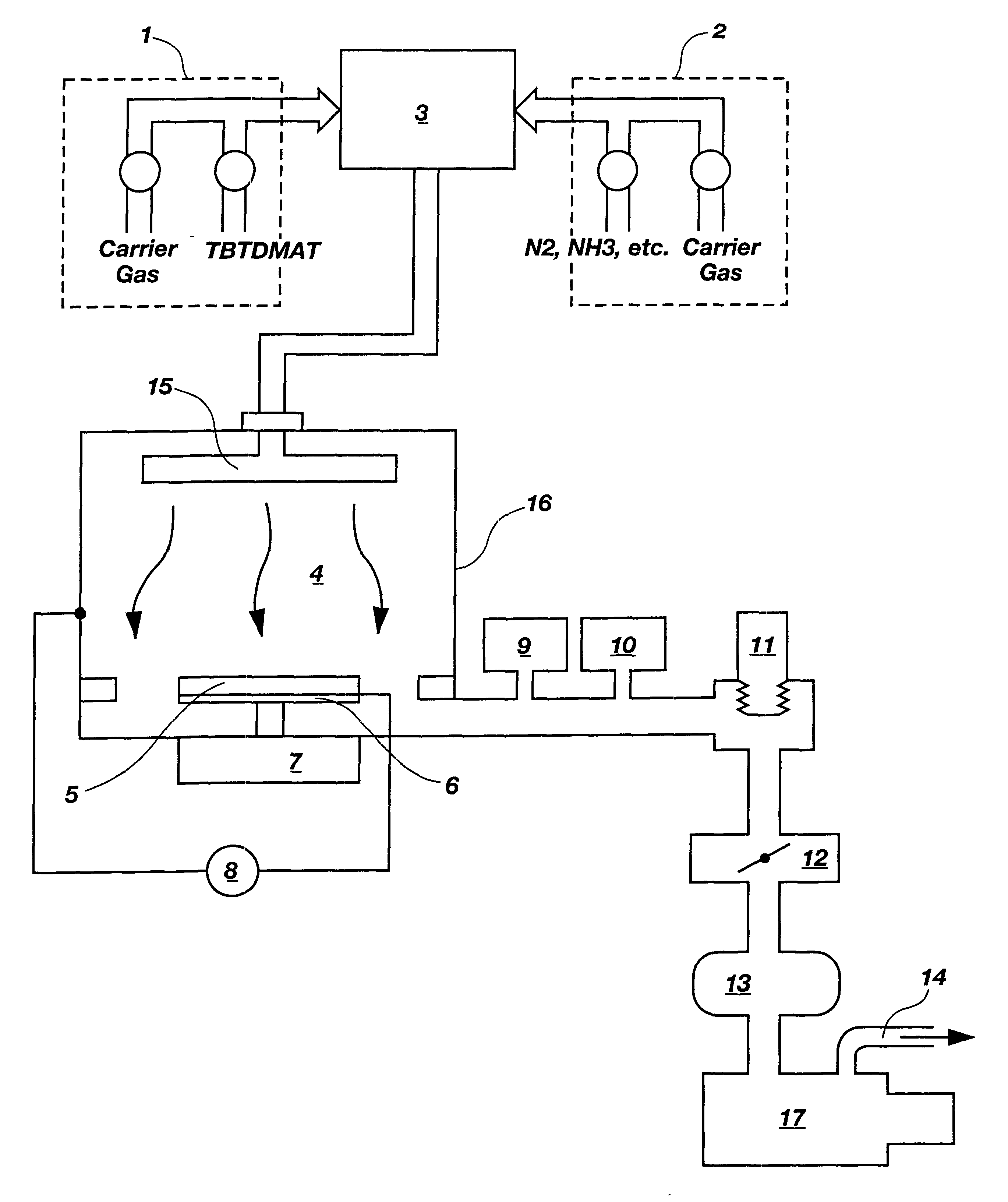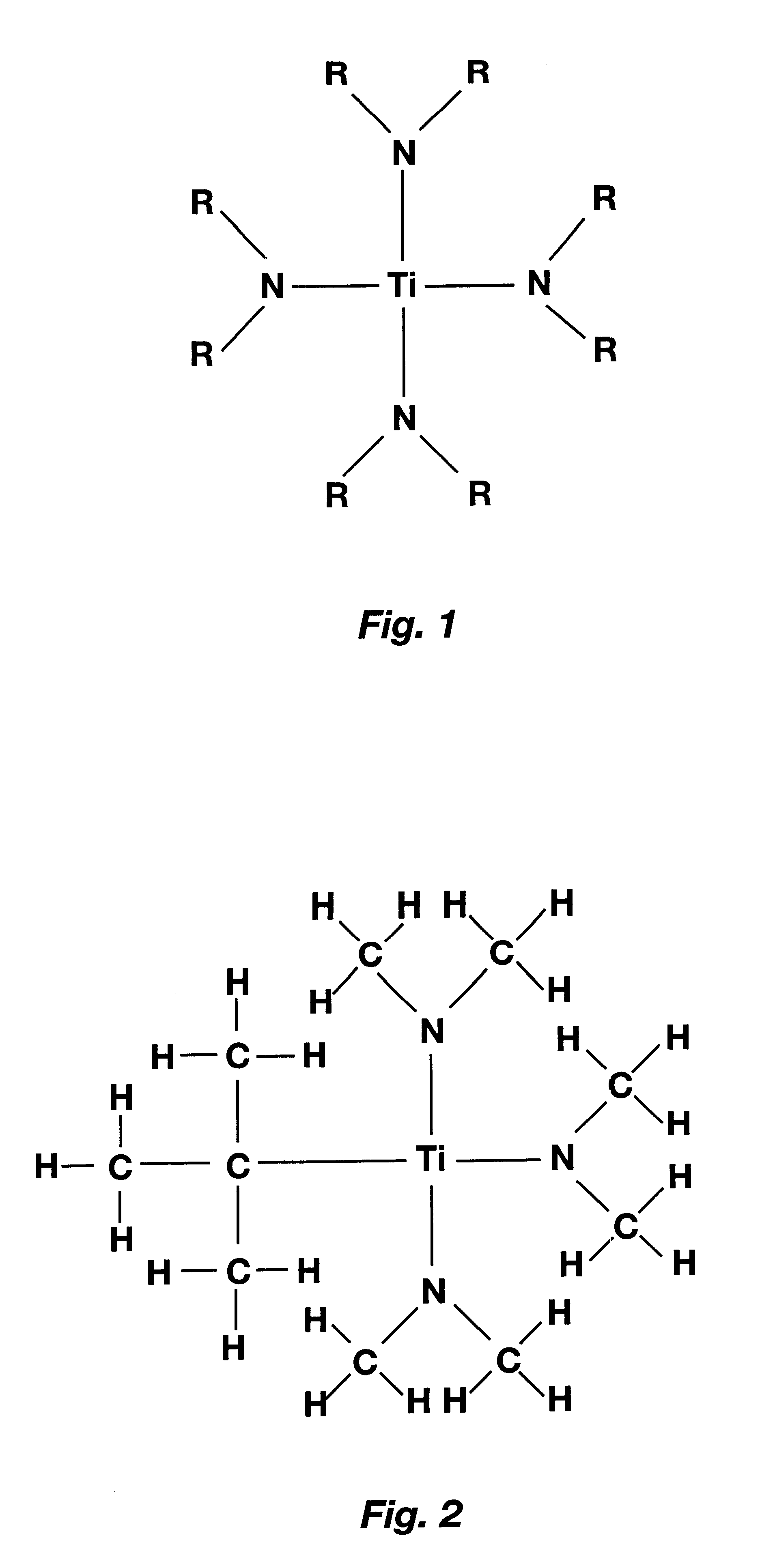Chemical vapor deposition process for depositing titanium nitride films from an organometallic compound
a technology of titanium nitride and chemical vapor deposition, which is applied in the direction of chemical vapor deposition coating, coating, plasma technique, etc., can solve the problems of high temperature involved in the process, poor step coverage of the film, and incompatibility with the conventional manufacturing process of integrated circuits
- Summary
- Abstract
- Description
- Claims
- Application Information
AI Technical Summary
Problems solved by technology
Method used
Image
Examples
first embodiment
the invention which utilizes a cold-wall plasma enhanced chemical vapor deposition (PECVD) process will be described with reference to FIG. 3. Although the following description of the process represents what the inventor believe is the preferred embodiment of the process, the process may be practiced in either cold-wall or hot-wall plasma-enhanced chemical vapor deposition chambers, with or without premixing of the reactants. Furthermore, although the invention is directed to a technique for depositing conformal titanium nitride layers for use in the manufacture of integrated circuits, the process is also applicable to the deposition of titanium nitride on substrates other than semiconductor wafers.
Referring now to FIG. 3, a tertiary-butyltris-dimethylamido-titanium metal-organic source gas is produced by heating liquid tertiary-butyltris-dimethylamido-titanium (the metal-organic precursor compound). The gas phase metal-organic compound transported by a carrier gas is admitted into...
second embodiment
A second embodiment of the invention will also be described with reference to the diagrammatic representation of the chemical vapor deposition chamber of FIG. 3. However, for this embodiment, no RF power is applied between the substrate holder 6 and the chamber wall 16. Instead, increased wafer temperature is relied on to effect a reaction between the tertiary-butyltris-dimethylamido-titanium and the nitrogen-containing gas. Diatomic nitrogen gas, because its dissociation temperature is greater than temperatures compatible with semiconductor processing, is not used for the process. Except for the use of higher temperatures within a range of about 500.degree. C. to 700.degree. C. and the lack of a plasma-generating RF power, other features of the process remain the same.
Other materials may be simultaneously incorporated in the titanium nitride films during either embodiment of the deposition process as heretofore described. For example, a titanium nitride film incorporating aluminum ...
PUM
| Property | Measurement | Unit |
|---|---|---|
| sheet resistance | aaaaa | aaaaa |
| temperature | aaaaa | aaaaa |
| temperature | aaaaa | aaaaa |
Abstract
Description
Claims
Application Information
 Login to View More
Login to View More - R&D
- Intellectual Property
- Life Sciences
- Materials
- Tech Scout
- Unparalleled Data Quality
- Higher Quality Content
- 60% Fewer Hallucinations
Browse by: Latest US Patents, China's latest patents, Technical Efficacy Thesaurus, Application Domain, Technology Topic, Popular Technical Reports.
© 2025 PatSnap. All rights reserved.Legal|Privacy policy|Modern Slavery Act Transparency Statement|Sitemap|About US| Contact US: help@patsnap.com



